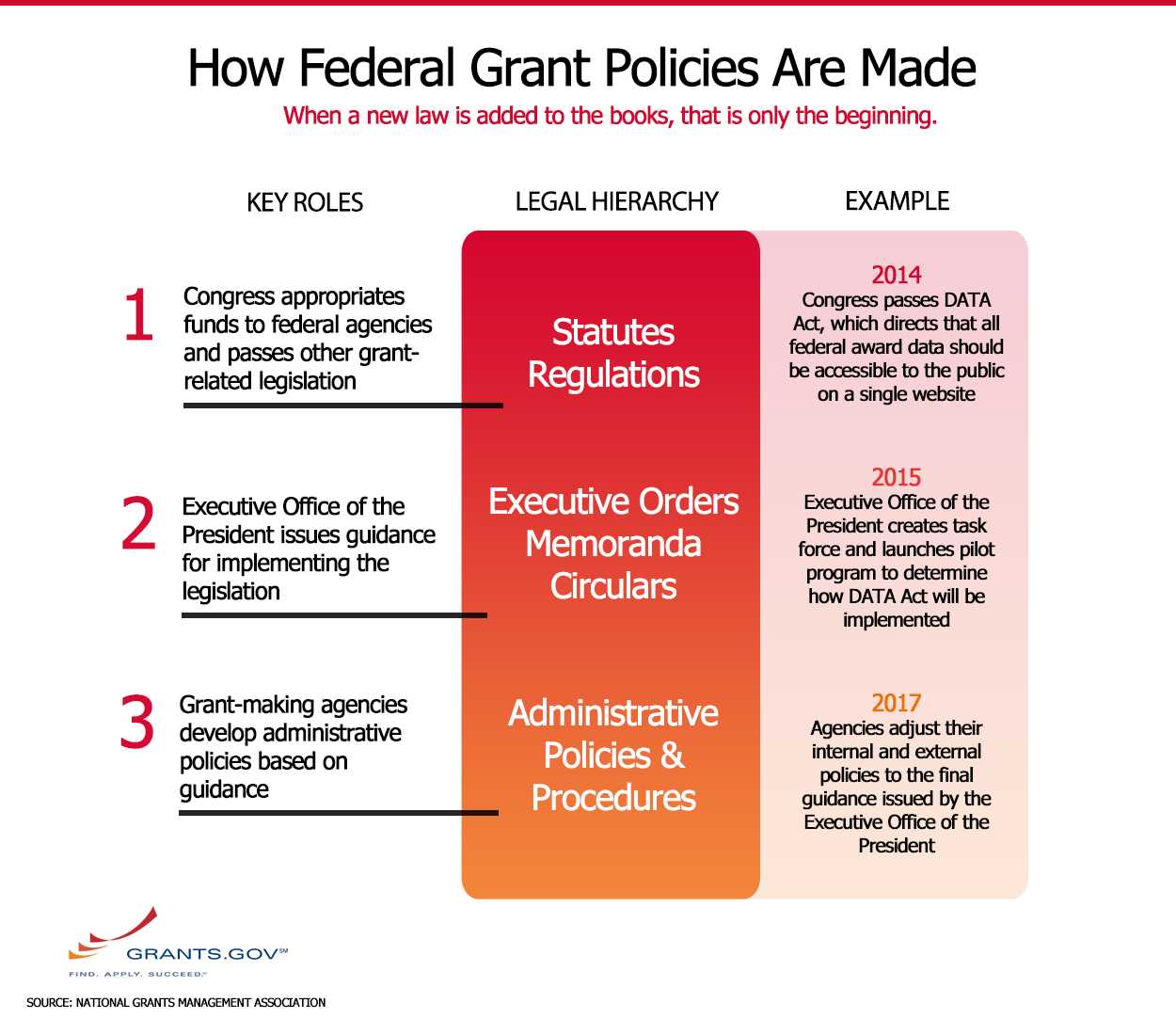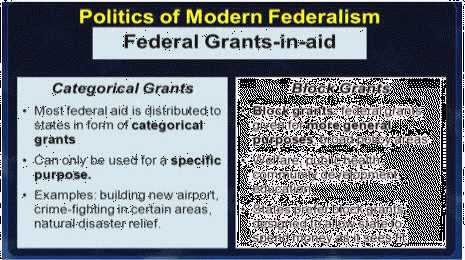Federal Grants In Aid Overview

Federal grants in aid are financial assistance provided by the federal government to state and local governments, as well as to individuals, organizations, and institutions. These grants are designed to support various programs and initiatives that align with the federal government’s goals and priorities.
The primary objective of federal grants in aid is to promote economic growth, social welfare, and public well-being. They aim to address specific needs and challenges faced by different sectors of society, including education, healthcare, infrastructure development, environmental conservation, and social services.
One of the key characteristics of federal grants in aid is that they come with certain conditions and requirements that recipients must meet in order to receive and utilize the funds. These conditions are typically outlined in grant agreements and may include reporting obligations, performance benchmarks, and compliance with federal regulations and policies.
There are several types of federal grants in aid, each serving a different purpose and target audience. Some common types include formula grants, project grants, block grants, and categorical grants. Formula grants allocate funds based on a predetermined formula, while project grants provide funding for specific projects or activities. Block grants give recipients more flexibility in how they use the funds, while categorical grants are earmarked for specific purposes or programs.
The benefits of federal grants in aid are numerous. They provide financial support to state and local governments, helping them to deliver essential services and implement important initiatives. They also promote collaboration and partnership between different levels of government and encourage innovation and experimentation in addressing societal challenges.
Examples of federal grants in aid include the Pell Grant program, which provides financial assistance to low-income students for college education, and the Community Development Block Grant program, which supports community development projects in low-income areas.
What are Federal Grants In Aid?
These grants can be categorized into different types based on their purpose and eligibility criteria. They are typically awarded through a competitive application process or allocated based on predetermined formulas.
Types of Federal Grants In Aid
There are several types of federal grants in aid, including:
- Categorical Grants: These grants are provided for specific purposes and are subject to strict guidelines and regulations. They can be further classified into project grants and formula grants. Project grants are awarded based on a competitive application process, while formula grants are allocated based on predetermined formulas.
- Project Grants: Project grants are awarded through a competitive application process. Organizations and individuals submit proposals outlining their projects and how they plan to use the funds. The grants are then awarded to the most deserving applicants.
- Discretionary Grants: Discretionary grants are awarded at the discretion of the federal agency or department. These grants are typically provided for research, innovation, or other initiatives that align with the agency’s goals and priorities.
Each type of federal grant in aid serves a specific purpose and has its own set of requirements and regulations. The goal is to ensure that the funds are used effectively and efficiently to address the needs of the recipients and achieve the desired outcomes.
Overall, federal grants in aid play a crucial role in supporting various programs and initiatives at the state, local, and individual levels. They provide financial assistance to those in need and contribute to the overall well-being and development of the nation.
Types of Federal Grants In Aid
There are several types of federal grants in aid that are provided to various entities, such as states, local governments, and nonprofit organizations. These grants are designed to support specific programs and initiatives, and they can be categorized into different types based on their purpose and eligibility criteria. Here are some of the most common types of federal grants in aid:
1. Categorical Grants: These grants are provided for specific purposes and are usually tied to particular activities or projects. They have strict guidelines and requirements that recipients must meet in order to receive funding. Examples of categorical grants include grants for education, healthcare, and transportation.
2. Block Grants: Unlike categorical grants, block grants give recipients more flexibility in how they use the funds. They are provided for broad purposes, such as community development or social services, and allow recipients to allocate the funds based on their specific needs and priorities.
3. Formula Grants: Formula grants are distributed based on a predetermined formula that takes into account factors such as population, income levels, and other demographic data. These grants are often used to support programs in areas such as education, transportation, and public health.
4. Project Grants: Project grants are awarded to organizations or individuals to support specific projects or research initiatives. These grants are usually competitive, and recipients are selected based on their proposals and the potential impact of their projects.
5. Matching Grants: Matching grants require recipients to provide a certain percentage of the funding, which is then matched by the federal government. These grants are often used to leverage additional funding from other sources and encourage collaboration between the federal government and other entities.
6. Discretionary Grants: Discretionary grants are awarded based on the discretion of federal agencies or departments. These grants are often used to support innovative projects or initiatives that align with the priorities of the agency or department.
Benefits of Federal Grants In Aid

There are several benefits to receiving federal grants in aid. These grants provide financial assistance to individuals, organizations, and communities in need. Here are some of the key benefits:
1. Financial Support:
One of the primary benefits of federal grants in aid is the financial support they provide. These grants can help individuals and organizations cover the costs of various expenses, such as education, healthcare, housing, and business development. They can be a lifeline for those who are struggling financially or facing economic challenges.
2. Promote Economic Growth:
By providing financial assistance to individuals and communities, federal grants in aid can help stimulate economic growth. These grants can be used to fund infrastructure projects, create jobs, and support small businesses. By investing in local communities, these grants can contribute to the overall economic development of a region or a nation.
3. Address Social Issues:
Many federal grants in aid are targeted towards addressing social issues and improving the well-being of individuals and communities. These grants can be used to support programs and initiatives that focus on education, healthcare, social services, and environmental conservation. By providing funding for these areas, federal grants in aid can help address societal challenges and improve the quality of life for many people.
4. Encourage Innovation:
Some federal grants in aid are specifically designed to encourage innovation and research. These grants can be awarded to individuals or organizations that are working on groundbreaking projects or developing new technologies. By providing financial support for innovation, these grants can foster creativity and drive progress in various fields, such as science, technology, and the arts.
5. Leverage Additional Funding:
Another benefit of federal grants in aid is their ability to leverage additional funding. Many grants require recipients to match a certain percentage of the grant amount with their own funds or funds from other sources. This requirement encourages collaboration and partnerships, and it can help organizations secure additional funding to support their projects or initiatives.
Examples of Federal Grants In Aid
There are various examples of federal grants in aid that are provided to different sectors and organizations. These grants are aimed at supporting and promoting specific activities and initiatives that align with the government’s goals and priorities.
1. Education Grants

One example of a federal grant in aid is the education grant. These grants are provided to schools, colleges, and universities to support various educational programs and initiatives. They can be used to improve infrastructure, develop new curriculum, provide scholarships, and enhance the overall quality of education.
2. Healthcare Grants
The government also provides federal grants in aid to healthcare organizations and institutions. These grants aim to improve healthcare services, promote research and development in the medical field, and enhance access to quality healthcare for all citizens. They can be used to fund medical research, upgrade healthcare facilities, and support community health programs.
3. Infrastructure Grants

Another example of federal grants in aid is infrastructure grants. These grants are provided to state and local governments to support the development and maintenance of infrastructure projects such as roads, bridges, airports, and public transportation systems. They can be used to fund construction projects, improve existing infrastructure, and promote economic growth.
4. Environmental Grants
The government also offers federal grants in aid to organizations and agencies working towards environmental conservation and sustainability. These grants aim to support initiatives that protect natural resources, promote renewable energy, and mitigate the impact of climate change. They can be used to fund research projects, implement conservation programs, and develop sustainable practices.
5. Nonprofit Organization Grants
Federal grants in aid are also provided to nonprofit organizations to support their activities and initiatives. These grants can be used to fund social welfare programs, promote community development, and address various social issues. They aim to empower nonprofit organizations to make a positive impact on society and improve the lives of individuals and communities.
These are just a few examples of the federal grants in aid that are available. The government provides a wide range of grants to support various sectors and address different needs. These grants play a crucial role in promoting economic growth, social development, and overall well-being in the country.

Emily Bibb simplifies finance through bestselling books and articles, bridging complex concepts for everyday understanding. Engaging audiences via social media, she shares insights for financial success. Active in seminars and philanthropy, Bibb aims to create a more financially informed society, driven by her passion for empowering others.
